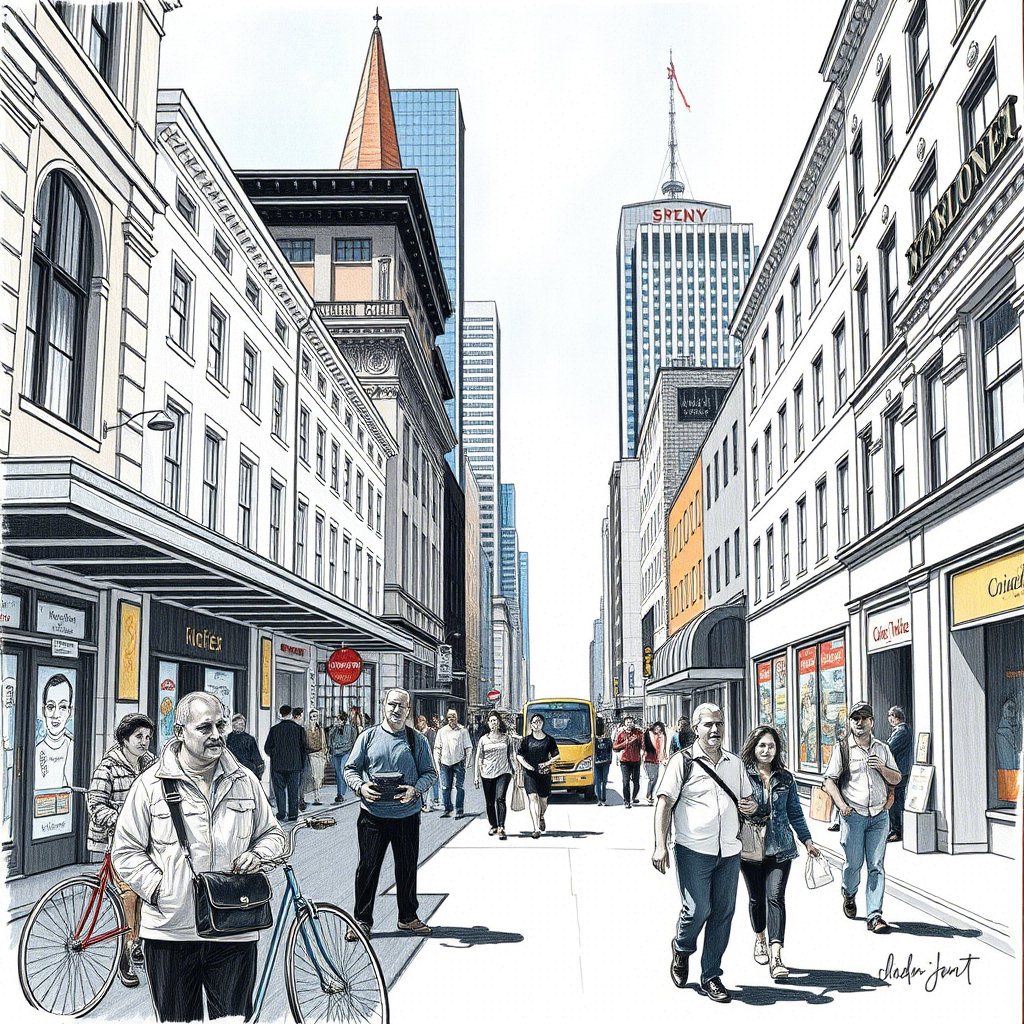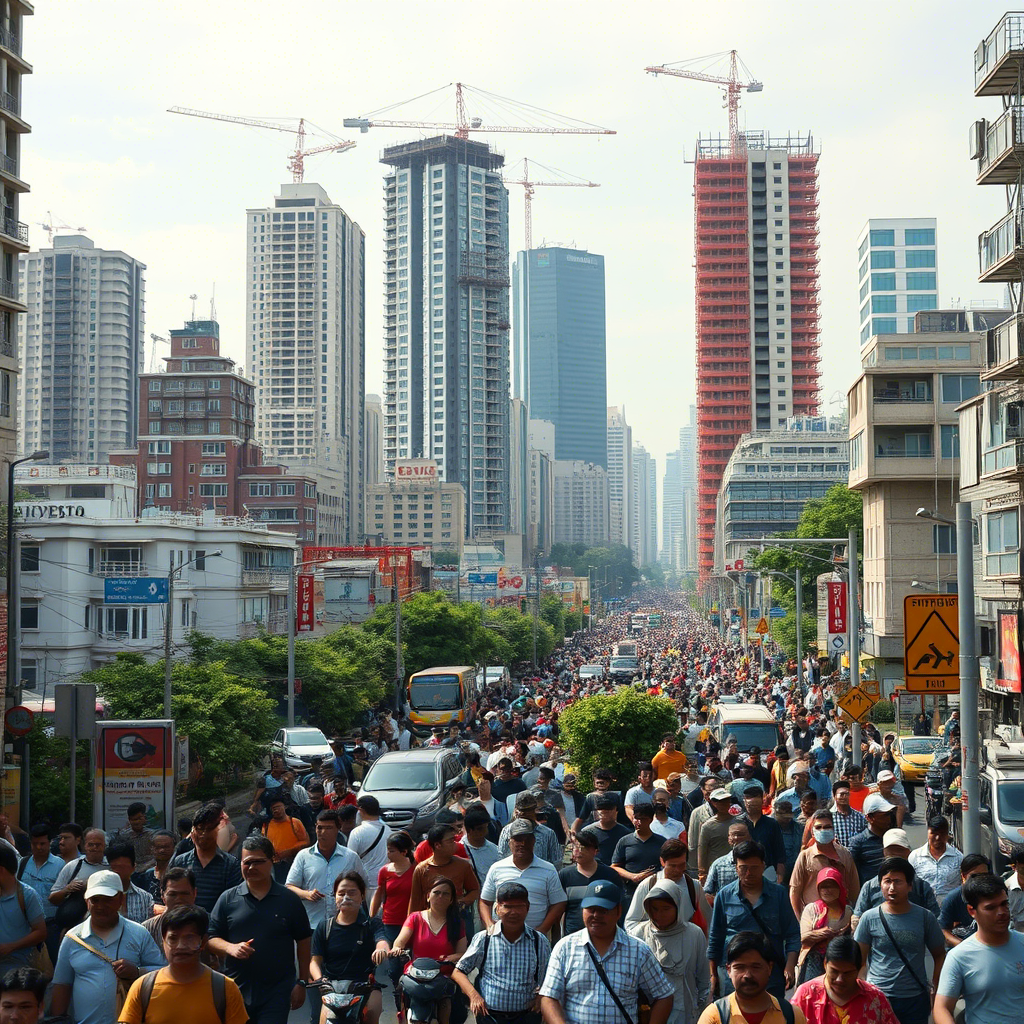Population Growth and Housing Affordability in the Modern City
Introduction: The Impact of Population Growth on Urban Housing Affordability
Population growth is one of the most pressing challenges facing urban centers around the world. As cities expand and their populations increase, the demand for housing rises, often outpacing the supply. This imbalance has far-reaching consequences, from skyrocketing property prices to the degradation of living standards. In this article, we will explore how population growth impacts housing affordability in urban areas, with a particular focus on Sydney as a case study. By examining both the demand and supply sides of the equation, we aim to shed light on potential policy solutions that could mitigate these adverse trends.
The Demand Side: Population Growth and Rising Housing Prices
Population Growth as a Driver of Housing Demand
Urban populations are forecast to increase significantly in the coming decades. According to projections by the United Nations, nearly 70% of the global population will live in cities by 2050, up from 56% in 2020. This rapid urbanization is driven by factors such as migration from rural areas, international immigration, and natural population growth. As more people move into cities, the demand for housing naturally increases. Without a corresponding rise in the supply of dwellings, this heightened demand pushes up prices for both renting and purchasing homes.
The resultant fall in affordability is a growing concern, particularly in large metropolitan areas. For example, in cities like New York, London, and Sydney, housing prices have reached levels that make it difficult for middle- and low-income families to afford decent accommodation. This issue is further compounded by changing living preferences, especially in Western countries, where household occupancy rates have fallen. Smaller family sizes and an increasing preference for single-person or couple-only households mean that more dwellings are required to house the same number of people, exacerbating the strain on housing markets.
The Ripple Effect of Unaffordable Housing
When housing becomes unaffordable, it creates a ripple effect across society. Younger generations, in particular, face significant barriers to homeownership, leading to delayed milestones such as marriage and starting a family. Renters, on the other hand, may find themselves spending an unsustainable portion of their income on housing, leaving little room for savings or discretionary spending. Over time, these pressures can contribute to social inequality and economic stagnation, as individuals and families struggle to achieve financial stability.
For policymakers, addressing the demand-side challenges posed by population growth requires innovative solutions. These might include measures to encourage higher-density living, incentivize shared housing arrangements, or implement rent control policies to protect vulnerable populations. However, demand-side interventions alone are insufficient without addressing the supply-side constraints that also contribute to the affordability crisis.
The Supply Side: Challenges in Meeting Growing Demand
Urban Sprawl and Infrastructure Pressures
On the supply side, population growth necessitates the construction of new dwellings to accommodate expanding urban populations. However, this often leads to urban sprawl, where cities expand outward into surrounding areas. While urban sprawl may provide short-term relief by increasing the availability of housing, it comes with significant long-term costs. One major issue is the pressure it places on existing infrastructure, such as roads, public transportation, water systems, and electricity grids. Extending or upgrading these systems to serve newly developed areas is both costly and time-consuming.
Moreover, new developments are frequently located in outlying areas of cities, far from established urban centers. This geographic dispersion increases the need for new infrastructure, which further drives up costs. Developers must also contend with modern environmental compliance requirements and elevated quality expectations, both of which add to the expense of constructing new housing. As a result, the cost of new supply often exceeds what many households can afford, perpetuating the cycle of unaffordability.
The Case of Sydney: A Microcosm of Global Trends
Sydney, Australia’s largest city, provides a compelling case study of the challenges posed by population growth. The city is projected to grow significantly over the next few decades, with its population expected to reach 6 million by 2036. Housing this growth is putting immense pressure on both urban redevelopment and fringe settlement. Redevelopment involves transforming underutilized or obsolete spaces within the city into residential areas, while fringe settlement refers to the expansion of suburbs into previously undeveloped land.
Both approaches present unique challenges. Urban redevelopment is constrained by limited available land, high land values, and resistance from existing residents who oppose densification. Fringe settlement, on the other hand, contributes to urban sprawl and strains infrastructure, as noted earlier. Together, these challenges highlight the complexity of ensuring long-term housing affordability in rapidly growing cities like Sydney.
Policy Directions to Address the Affordability Crisis
Encouraging Higher-Density Living
One potential solution to the affordability crisis is encouraging higher-density living. By promoting the construction of apartment buildings, townhouses, and other forms of compact housing, cities can accommodate more residents within existing urban boundaries. This approach not only reduces the need for urban sprawl but also makes better use of existing infrastructure. Governments can support this transition by revising zoning laws, offering incentives to developers, and investing in public amenities that make high-density living more attractive.
Investing in Affordable Housing Initiatives
Another critical step is investing in affordable housing initiatives. Governments can partner with private developers and nonprofit organizations to create subsidized housing options for low- and middle-income families. These initiatives might include inclusionary zoning policies, which require developers to allocate a percentage of new projects to affordable units, or direct funding for the construction of social housing. Additionally, governments can explore innovative financing models, such as community land trusts, to ensure long-term affordability.
Enhancing Public Transportation
 Improving public transportation is another key strategy for addressing the affordability crisis. By making it easier and more convenient for residents to commute from outlying areas to urban centers, cities can reduce the pressure to live in expensive inner-city neighbourhoods. Investments in buses, trains, and light rail systems can also help alleviate traffic congestion and reduce greenhouse gas emissions, contributing to broader sustainability goals.
Improving public transportation is another key strategy for addressing the affordability crisis. By making it easier and more convenient for residents to commute from outlying areas to urban centers, cities can reduce the pressure to live in expensive inner-city neighbourhoods. Investments in buses, trains, and light rail systems can also help alleviate traffic congestion and reduce greenhouse gas emissions, contributing to broader sustainability goals.
Leveraging Technology and Innovation
Finally, leveraging technology and innovation can play a role in addressing the housing affordability crisis. Modular construction techniques, for example, allow for faster and cheaper building processes, potentially reducing the cost of new supply. Smart city technologies, such as data-driven urban planning tools, can optimize land use and resource allocation, ensuring that development aligns with population growth trends.
Conclusion
Population growth is a double-edged sword for urban areas. While it brings opportunities for economic growth and cultural diversity, it also poses significant challenges, particularly in terms of housing affordability. By understanding the interplay between demand and supply, cities can develop targeted strategies to address these issues. From encouraging higher-density living to investing in affordable housing and public transportation, there are numerous avenues for policymakers to explore. The case of Sydney underscores the urgency of these efforts, serving as a reminder that proactive measures are essential to ensure that urban growth benefits all residents, not just a privileged few.
Related External Links
- United Nations World Urbanization Prospects
- Australian Bureau of Statistics – Sydney Population Projections
- World Bank Report on Urbanization and Housing
- Smart City Technologies for Sustainable Development
- Community Land Trusts as a Tool for Affordable Housing

